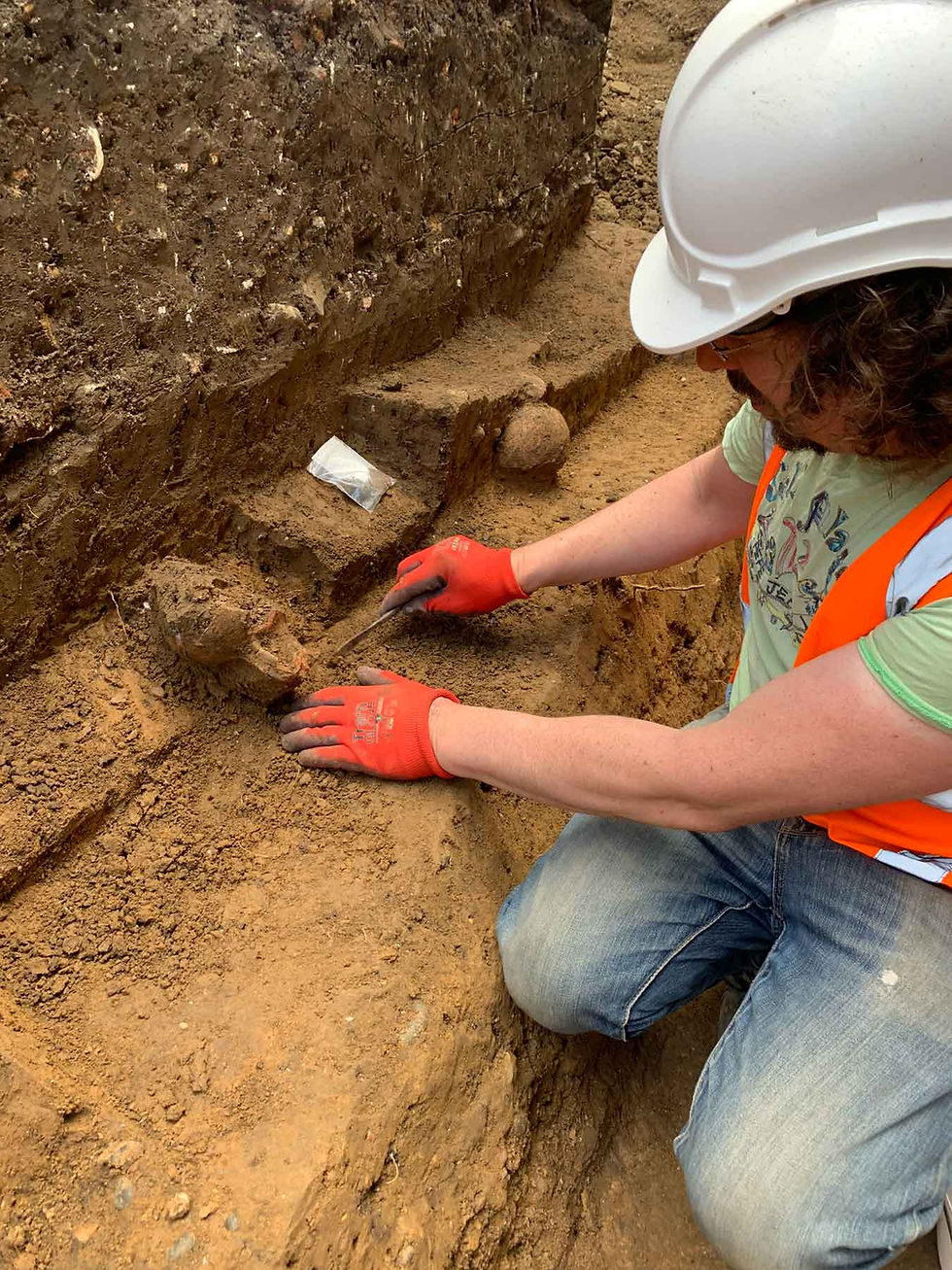Beneath the prison
- janeelder
- Nov 20, 2019
- 2 min read
Updated: Jan 12, 2022
An extensive archaeological investigation of the site of the former Canterbury Prison, now part of Canterbury Christ Church University, took place between July 2018 and June 2019. The work was undertaken in advance of and during the construction of Building 2 destined to house new Science, Technology, Health, Engineering and Medical facilities.
Many archaeological features were identified and excavated. Potentially the earliest was a cremation burial of second- to third-century date containing two semi-complete pottery vessels. This burial is part of a larger Romano-British cemetery excavated by the Trust during the extension of the Old Sessions House in the late 1990s.

Cutting the grave was a probable early medieval ditch from which large quantities of animal and bird bone, including slightly unusual species such as teal and red-throated diver, were recovered. It is likely that this bone represents the remains of food being consumed within the Abbey. Also excavated in this area were substantial Romano-British and medieval pits, with similar examples excavated in the 1990s. A large boundary ditch that ran parallel to Longport was also identified.
The most significant find in this area was an Anglo-Saxon grave containing the heavily degraded remains of an adult female. The woman had been buried with a silver garnet-inlaid Kentish disc brooch, a necklace of amber and glass beads, a belt fastened with a copper alloy buckle, a copper alloy bracelet and an iron knife. The brooch would have been made in east Kent during the final decades of the sixth century AD with the garnets likely originating in Sri Lanka. The brooch and the other finds suggest a date of burial between about 580 and 600.




This burial, close to the present boundary with St Augustine’s Abbey, almost certainly took place before the construction of the first church at St Augustine’s in the early seventh century. This suggests that high-status burial was taking place on the site in the years shortly before the establishment of the abbey. The subsequent burial of Augustine and his companions, archbishops, and members of the Kentish royal dynasty therefore represents a continuance of existing practice at the site, rather than a completely new development.


The archaeological work undertaken in the Old Sessions House area represents the final phase of investigations which have taken place as part of the Building 2 project. Within the main site discoveries included Romano-British and medieval pits and ditches, though much of the earlier archaeology in this area had been destroyed by post-medieval quarrying. Some of this quarrying may have been associated with the construction of the prison buildings in the nineteenth century. A substantial medieval ditch was recorded running along North Holmes Road which would have formed part of the boundary to the outer precincts of the Abbey.








Comments